Cannabis fimming guide: Everything you should know
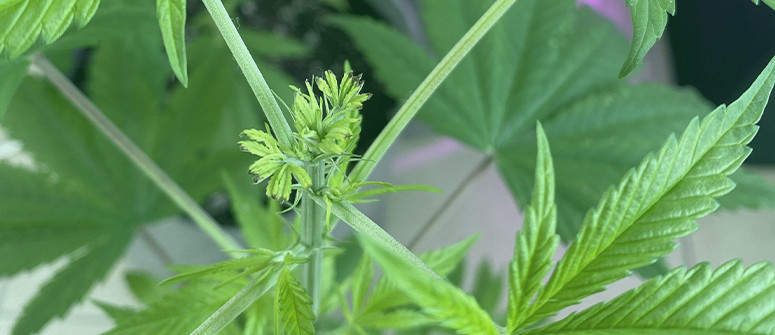
Ever tried to top your plants and missed the main stem entirely? Believe it or not, there’s a name for that—f*ck I missed (FIM). Also called fimming, it’s actually a versatile pruning technique in its own right. Keep reading to find out more.
Contents:
What if removing part of your plant’s top growth could encourage the production of up to four new colas? Would you try it? Well, with “f*ck I missed”, or FIM for short, that’s exactly what we’re going to do—remove roughly 80% of the topmost growth to encourage multiple colas. It may sound simple, but it’s not without its caveats, so keep reading as we take a closer look at this versatile pruning technique.
What does fimming cannabis mean?
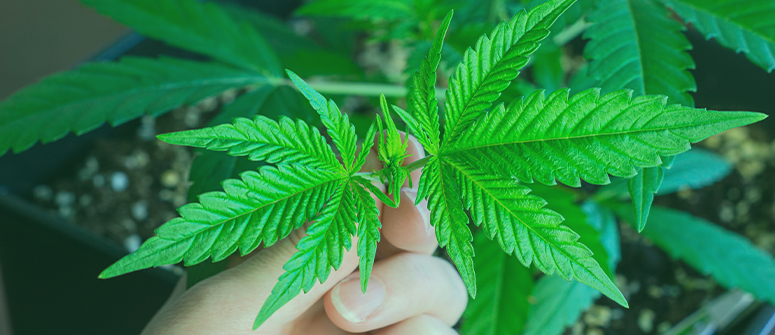
Fimming is a popular pruning for yield technique that encourages the development of multiple colas. And while it does share some similarities with topping, it’s slightly kinder on plants by only removing part of the topmost growth. Also known as FIM (f*ck I missed), the aptly titled acronym is a homage to what essentially looks like a poorly topped plant.
Rather than cut straight through the main stem, growers remove roughly 70–80% of the topmost growth. Removing most of this growth encourages the plant to divert its resources to multiple new shoots, breaking apical dominance and creating several main cola sites without the need to top the primary stem.
Not only is this approach far less intimidating for beginners, but it’s less stressful for your plants. Perhaps the only downside to fimming is that it doesn't create a perfectly uniform canopy like topping or manifolding, but that’s nothing you can’t solve with a little low-stress training (LST).
What are the benefits of fimming cannabis?
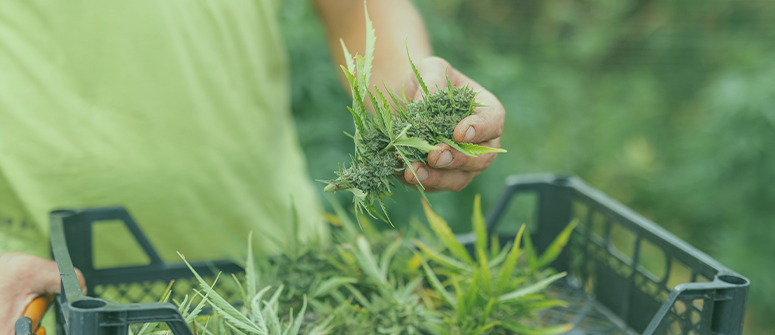
Fimming offers growers numerous advantages, especially if you aren’t confident enough to cut straight through your beloved plant’s main stem.
Keeps plants short
While topping is the king of controlling plant height, fimming is a strong second choice. However, you’ll need to combine fimming with LST to really keep plant height under control.
When growers FIM the topmost growth, it creates multiple, uneven shoots, and as these develop, you’ll need to keep tweaking and adjusting to achieve a uniform bush. Of course, when you first cut your cannabis plants, their upward growth will naturally slow, which gives you plenty of time to start tying branches down or setting up a screen.
Relatively low-stress
Although technically classed as a high-stress training (HST) technique, fimming actually has a much milder impact on cannabis plants than topping or manifolding. We’re only removing some of the topmost growth, rather than completely changing the course of development by cutting the main stem. And because it’s kinder to your plants, it’s more beginner-friendly and less likely to damage plants beyond repair.
Can be done multiple times
So, how many times can you FIM a plant? If you start early enough, you can perform the technique multiple times. Be aware, however, that each time you FIM, you’ll need to give plants a chance to recover, and this repeated downtime will extend the vegetative stage.
Still, if you’re not in a rush and want to maximise your cannabis’ cola development, you can FIM once every 2–4 weeks of growth. Just keep a close eye on plants to ensure they’ve overcome the stress of fimming before you go again.
Bigger yields
Ultimately, the most significant benefit of fimming is the chance of producing not one, not two, but four tightly packed colas. By increasing the number of bud sites, you not only increase yield potential, but limit the risk of issues such as bud rot. By spreading bud development across several shoots, you can more evenly space the colas and ensure adequate light exposure and air circulation.
Plus, if you decide to FIM several times during the vegetative stage, you could end up with dozens of colas rather than the traditional Christmas tree-like appearance. In short, fimming is a great way to push the potential of your chosen strain while keeping overall plant size and plant stress under control.
When is the best time to FIM cannabis?
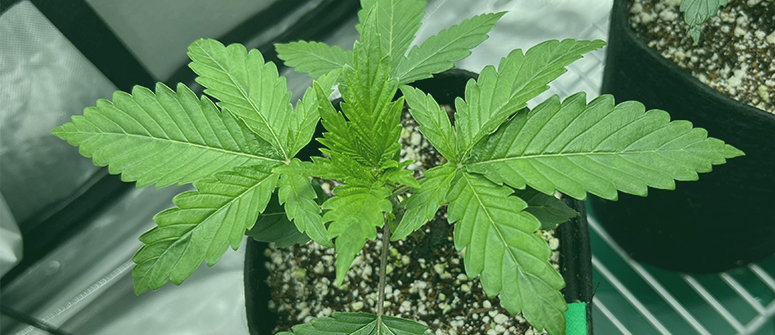
While less can go wrong with fimming than with topping and other HST techniques, timing is a crucial consideration. Get it wrong, and you risk stunted plant growth and lacklustre bud development. Fimming is best done during the early vegetative stage and should be avoided entirely during flowering (more on that shortly).
- Wait until plants have at least 3–5 nodes before fimming.
- If you plan on fimming multiple times, wait 2–4 weeks between each FIM to let plants recover.
- You can FIM during the later stages of vegetative growth, but creating an even plant canopy becomes harder.
Fimming is quite a versatile technique with a long window of opportunity. And while it may be tempting to FIM seedlings when they start developing their first sets of true leaves, doing so can dampen growth and cause them to falter.
Likewise, fimming during the flowering stage is also a no-go. The focus for cannabis plants during flowering is not the development of plant structure or new colas; it’s the development of existing bud sites. By fimming during flowering, you’re reducing possible bud sites rather than prompting the growth of new ones. In short, once plants enter flowering, fimming, topping, or any other high-stress techniques are off limits.
How to FIM cannabis plants
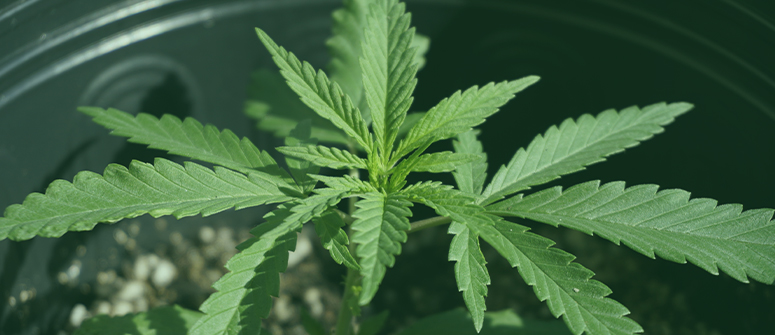
If all this talk of fimming has you reaching for the pruning shears, but you’re not sure where to start—don’t worry. Below is a detailed step-by-step guide to ensure the process goes off without a hitch.
What do you need?
Want to know the best part about fimming? All you need is a pair of pruning shears. Just ensure they’re sterile first to prevent any unwanted complications.
Fimming step-by-step guide
Step 1: Wait until seedlings have developed 3–5 nodes. Carefully select the topmost shoot, pinching it between your thumb and index finger.
Step 2: Using your other hand, pick up the shears and carefully cut across the growth (just beneath your fingers). You want to remove 70–80% of the growth.
Step 3: Your cannabis plant may look a little mangled, but don’t panic—this is perfectly normal. Provided the plant was healthy when you gave it the snip, it’ll start to heal almost immediately.
Step 4: New shoots will start developing just above the topmost stems in a part of the plant called the axil.
Don’t worry if plant growth stalls a little after fimming. It can take your plant a few days to bounce back, after which it will get back to the task at hand—growing big and strong!
Can you FIM autoflowering cannabis plants?
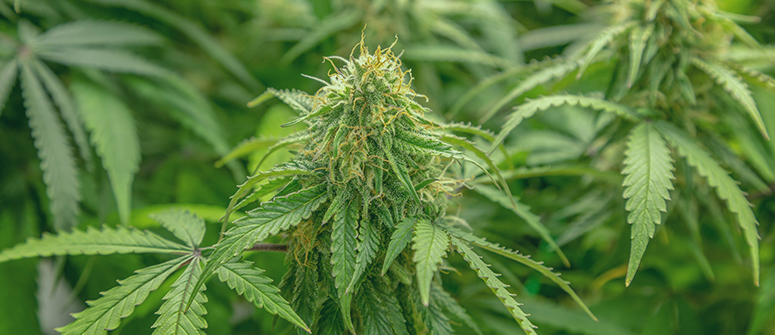
The simple answer is yes, you can FIM autoflowering cannabis plants. But the real question is, should you? For most growers, leaving an autoflowering plant to grow without much intervention is the most sensible course of action. Because autos follow a strict time schedule, any interference with the vegetative or flowering phase can limit overall development and yields.
That said, skilled growers can still try to push the capabilities of an auto by adopting low-stress training techniques. Technically, fimming isn’t as low-stress as LST or ScrOG, but it’s an excellent middle ground. And provided your auto is happy and healthy, there’s little reason not to try fimming during the early vegetative stage.
Just be aware that fimming autos more than once is not recommended, as it may negatively impact plant health and bud development in the long run.
Fimming cannabis: A surefire way to bigger buds
If the thought of topping cannabis plants makes you uneasy, then look to fimming instead. Not only is it less daunting, but it’s actually gentler on plants, while still encouraging that all-important multiple cola development. Even better, it only requires a pair of pruning shears and a carefully placed cut during the early vegetative stage.
Fimming alone can certainly help to keep plant height in check, but it won’t stop upward growth in the same way as topping. Therefore, to really make the most of your fimming adventures, it’s best to combine the technique with low-stress training (LST) or a screen of green (ScrOG). Doing so will ensure plant structure stays short and bushy while you watch four or more densely packed colas take shape.




